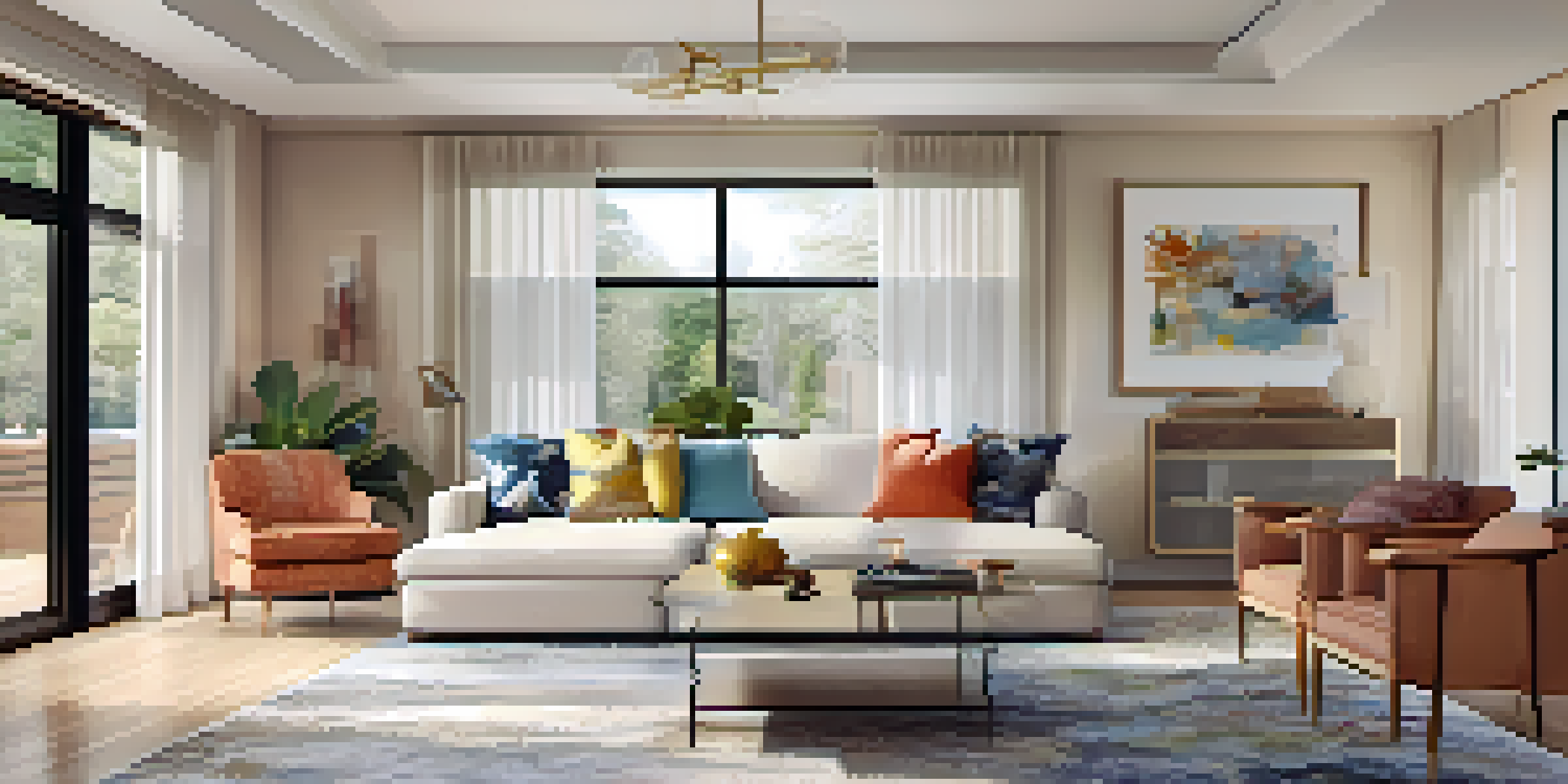Incorporating Art in Open Concept Spaces

Understanding Open Concept Spaces and Their Challenges
Open concept spaces are popular in modern design, promoting a sense of freedom and flow. However, they can often feel vast and impersonal, lacking defined areas that make a space feel cozy or lived-in. This is where art comes into play, acting as a bridge that connects different zones and adds personality to the environment.
Choosing the Right Art for Your Space
When selecting art for open concept spaces, consider the overall aesthetic and purpose of the area. Large, bold pieces can serve as focal points, while smaller works can complement furniture and decor. Think about the emotions you want to evoke; for example, bright colors can energize a room, while softer tones may create a more serene atmosphere.
Art Enhances Open Concept Spaces
Incorporating art adds personality and warmth, making large, open areas feel more inviting and connected.
Creating Functional Art Installations
Functional art can be a game changer in open concept areas. Imagine a beautiful shelving unit that doubles as a display for your favorite books and art pieces. This way, you not only enhance the visual appeal of the space but also maintain its functionality, ensuring that every element serves a purpose.
Using Art to Define Spaces Within Open Areas
Art can effectively delineate different zones in an open concept layout. For instance, a large mural can create a visual boundary between a living area and a dining space. By strategically placing artwork, you help guide the eye and create a sense of order without the need for physical walls.
Art Defines Zones Without Walls
Strategically placed artworks can visually separate different areas in open layouts, creating order and guiding the eye.
Incorporating Textiles and Fabric Art
Textiles can add warmth and texture to open spaces, making them feel more inviting. Consider hanging tapestries or fabric art that can soften hard surfaces and add color. These elements not only beautify a space but can also reduce echo and improve acoustics, enhancing the overall experience.
Utilizing Lighting to Highlight Art
Proper lighting can transform how your art is perceived in an open concept area. Using spotlights or wall-mounted fixtures can draw attention to specific pieces, making them stand out. Additionally, well-placed ambient lighting can create a cozy atmosphere that encourages social interaction and relaxation.
Rotating Art Keeps Spaces Engaging
Regularly changing art pieces can rejuvenate the atmosphere, allowing for new themes and fresh perspectives.
Balancing Art with Other Design Elements
Incorporating art is about balance; it should complement, not overwhelm. Consider your furniture, colors, and overall design scheme when adding art. For example, if you have a minimalist design, a single oversized piece can make a statement without cluttering the space.
Keeping Art Fresh with Rotating Exhibits
To maintain a dynamic atmosphere, think about rotating your art regularly. This keeps the space feeling fresh and allows you to showcase different artists or themes. Whether it's seasonal pieces or a rotating gallery of family photos, changing the art can reinvigorate your space and keep it engaging.